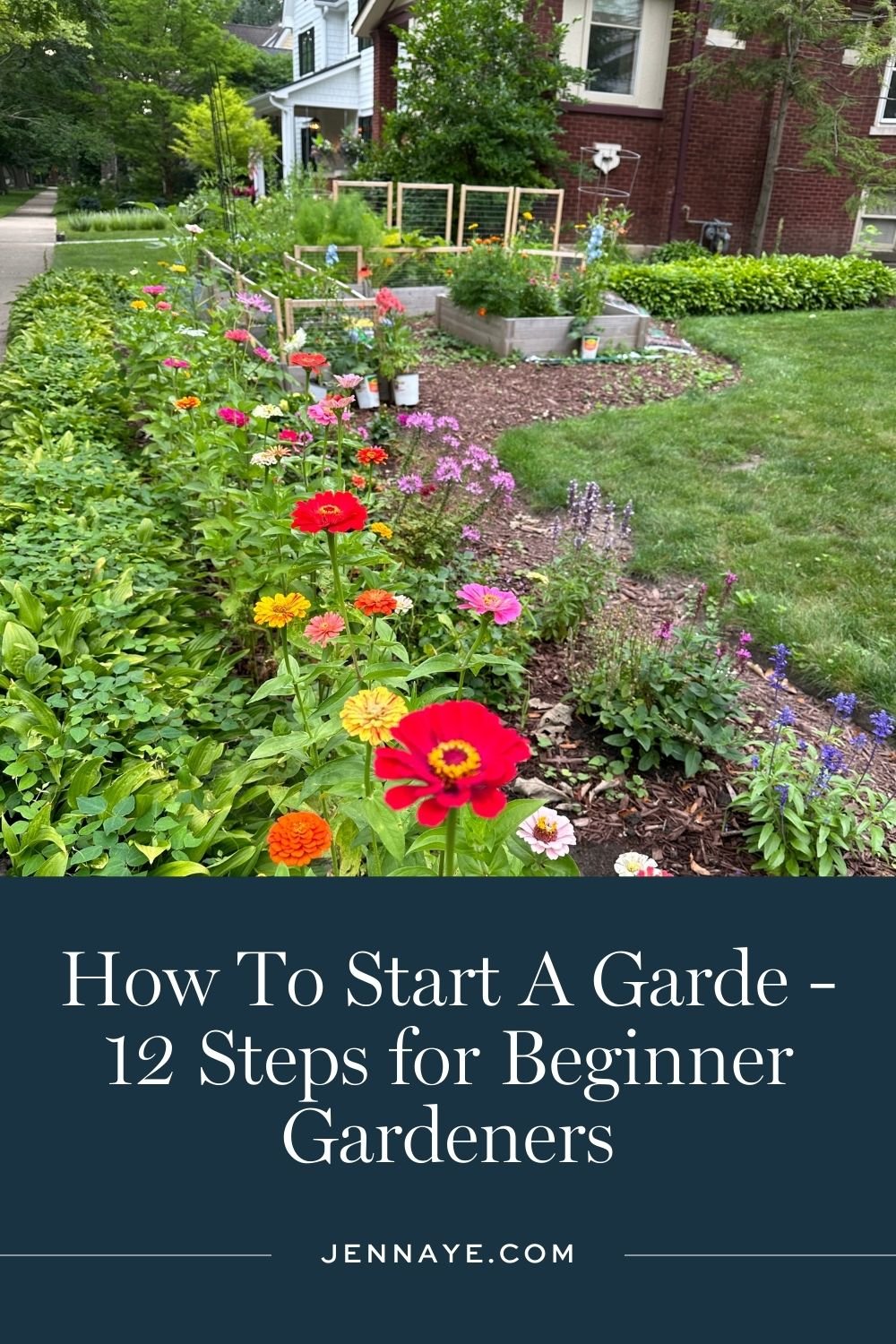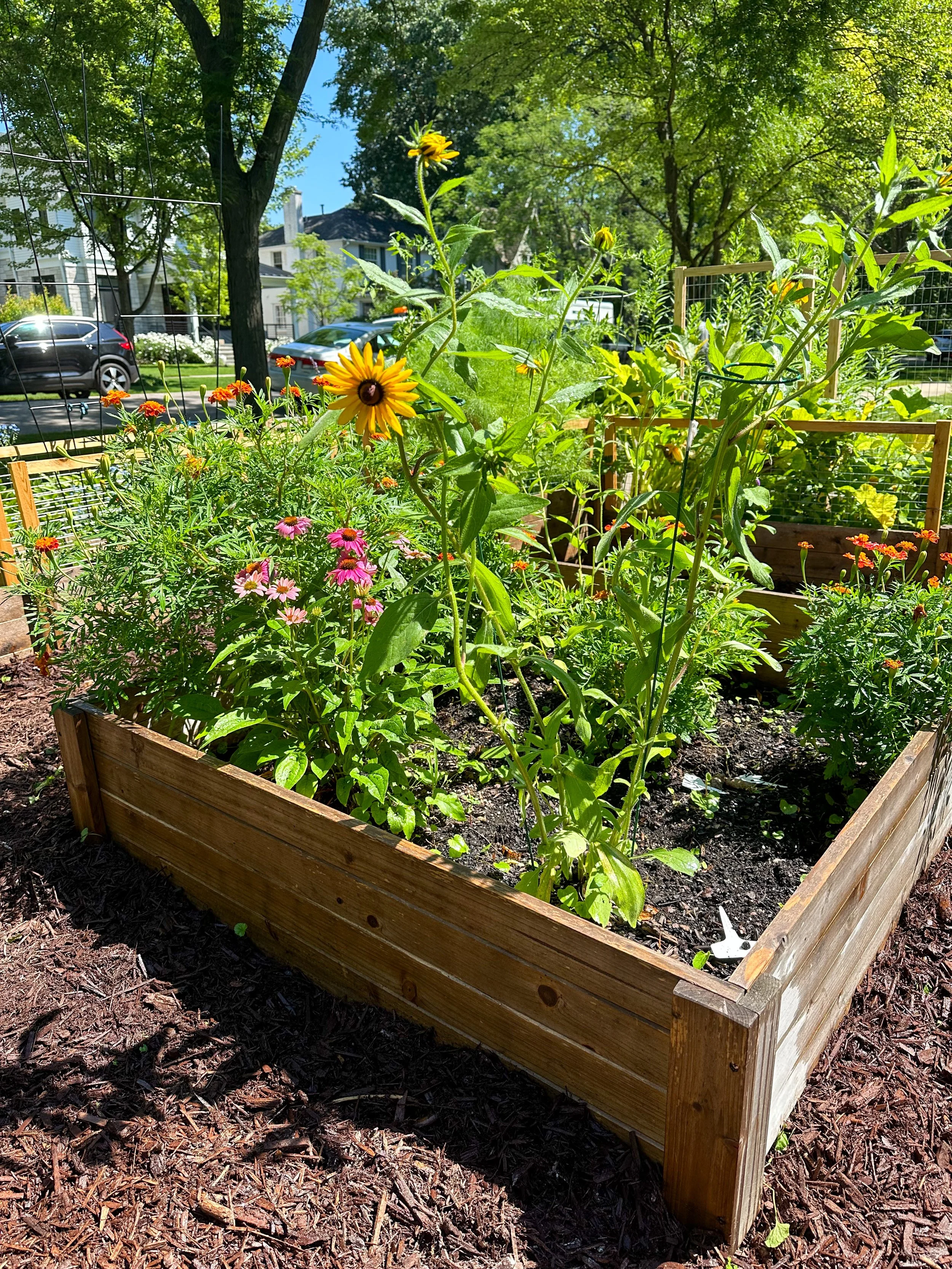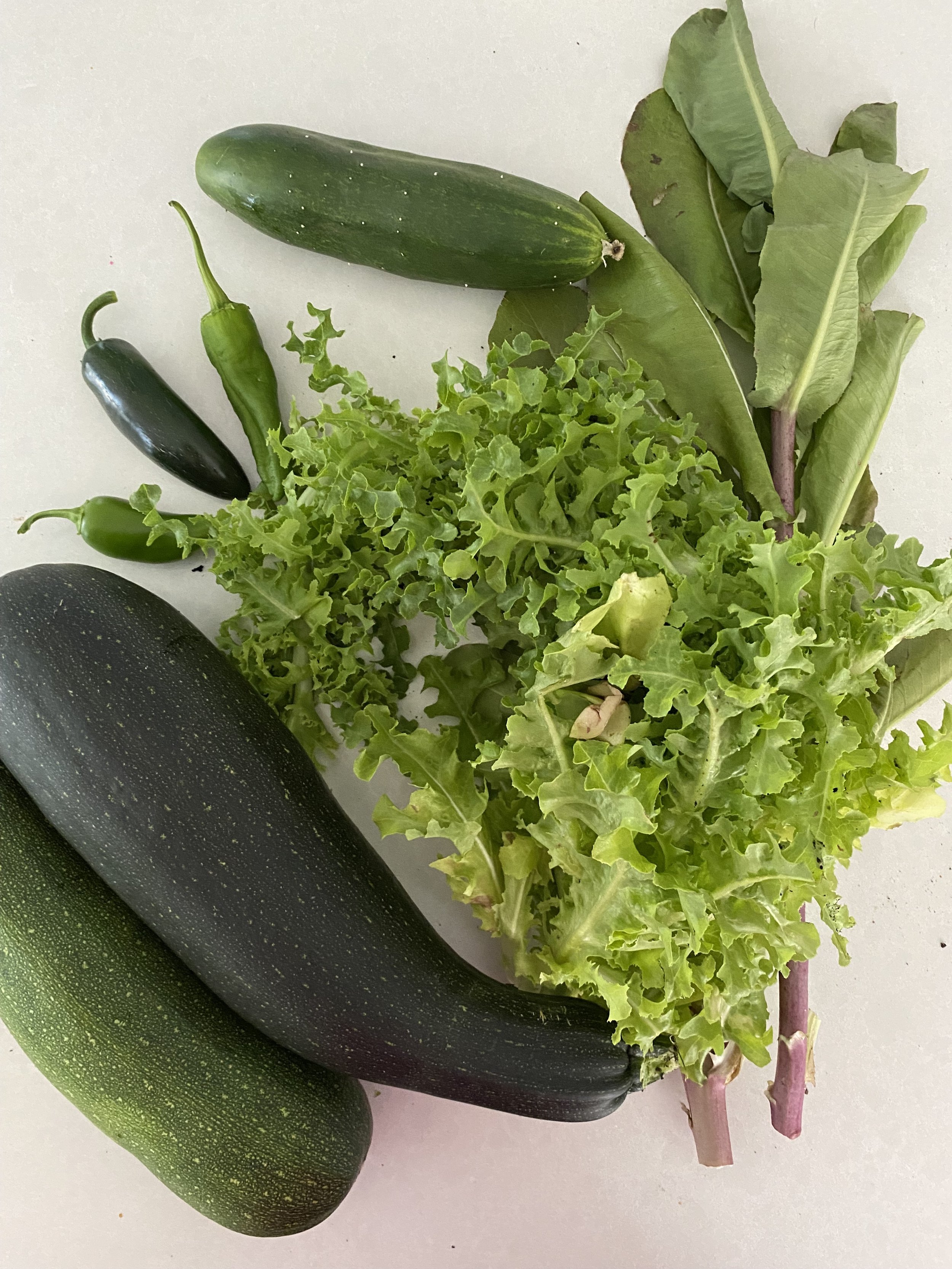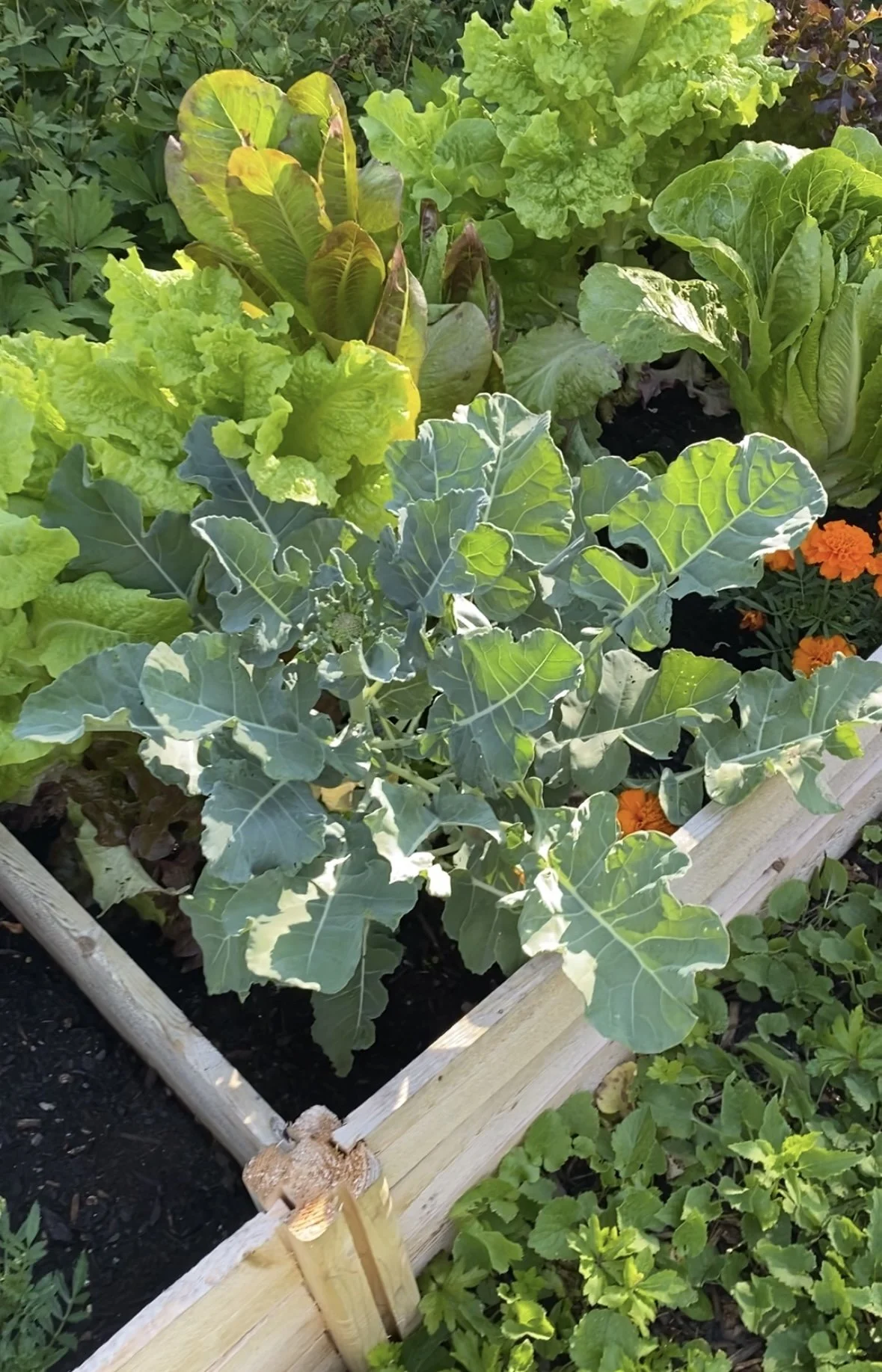How To Start A Garden - 12 Steps for Beginner Gardeners
Moving from the city to the suburbs brought us more space, and I knew I wanted a new hobby – gardening. As an outdoor activity that my daughter and I can enjoy together. Gardening does take quite the investment of time and money, especially if you start with raised garden beds. If you're hesitant, start small and begin with herbs in pots.
How To Start A Garden - 12 Steps for Beginner Gardeners
There's something truly magical about tending to a garden and witnessing the wonders of nature unfold. Starting a new garden offers a productive use of small space, a canvas to paint your yard with vibrant colors, fragrant blooms, and an abundant harvest of fruits and vegetables. Let's grow together!
How do I plan the layout of my garden?
Planning the layout of your garden is an important first step to ensure a well-designed and functional outdoor space. Here are some simple steps to help you plan the layout of your garden:
1. Assess your space:
Start by taking a good look at your garden and observing its size, shape, and any existing features. Consider factors such as sunlight exposure, soil quality, and drainage. This will help you determine what types of plants and structures will thrive in your garden. Garden location plays a huge role in your success, so consider the best location for your garden.
2. Define your goals:
Think about how you want to use your garden. Do you want it to be a space for relaxation, entertaining guests, growing vegetables, or all of the above? Identifying your goals will guide your layout decisions and ensure that your garden meets your needs. A first garden is a great place to start learning!
3. Create zones:
Divide your garden into different zones based on their specific functions. Common zones include seating areas, dining spaces, play areas, and plant beds. This helps organize the space and creates a sense of order and purpose. For small gardens, dividing the space into manageable zones is a great way to maximize every inch.
4. Consider pathways:
Determine how you will move through your garden by planning pathways. They can be made of materials like gravel, stone, or wood, depending on your style and budget. These pathways can also be functional, helping you navigate areas like your herb garden or flower garden.
5. Choose plants wisely:
Select plants that are suitable for your climate, soil type, and sunlight exposure. Consider their growth habits, heights, and colors to create a visually appealing garden. Group plants with similar needs together to make watering and maintenance easier. A general rule is to plant taller varieties at the back of your garden bed and shorter plants in the front to ensure that all of your plants get sufficient sunlight. Incorporating organic materials like compost can improve your soil and help plants thrive. If you have sandy soils, make sure to amend them with organic matter to improve water retention and fertility.
6. Think about structure:
Incorporate structures like trellises, arbors, and fences to add height and visual interest to your garden. These structures can also provide support for climbing plants or create privacy. Raised bed gardens are a good idea for well-drained soil and can help create a successful garden.
7. Add focal points:
Include focal points in your garden design to draw the eye and create visual interest. This could be a sculpture, a fountain, or a beautiful plant arrangement. A good place for these elements is at the end of a pathway or near a seating area.
8. Consider sustainability:
Opt for sustainable gardening practices by using organic fertilizers, conserving water, and attracting beneficial insects. This will not only benefit the environment but also promote the health and longevity of your garden. Consider using a drip irrigation system to efficiently water your plants. Check out your local garden center for irrigation products and tips for sustainable gardening.
9. Plan for growth:
Keep in mind that plants will grow and change over time. Leave enough space for them to spread out and consider how they will look at different stages of growth. For young plants, be sure to provide ample space for them to mature and thrive.
10. Get creative with container gardening:
If you have limited space or poor soil quality, consider container gardening. You can grow a variety of plants in containers, including flowers, herbs, and even small vegetables. Small space gardening is the perfect opportunity to try this method.
11. Start small:
It's easy to get overwhelmed when starting a garden, so start small and gradually expand. This allows you to learn and experiment without feeling too overwhelmed. Consider planting a small garden or just a few garden beds in your first garden as your initial venture.
12. Enjoy the process:
Gardening is a journey, so remember to enjoy the process and not just focus on the end result. Take time to appreciate the beauty of nature and the satisfaction of nurturing your own vegetables. With organic matter and careful planning, you'll see the fruits of your labor in no time!
Should I use raised beds?
Without a doubt! If you're wondering whether to use a raised garden bed, I highly recommend Greenes Fence raised garden beds. You can learn more about why in this blog post.
I cannot stress enough how much I endorse Greenes Fence products, particularly their Cedar Raised Bed, which has truly transformed my gardening experience. Its durability and practicality make it the base of my garden, making gardening enjoyable and easy, even for beginners like me.
When you build your raised garden beds, dig holes to ensure proper drainage, and find a good location with full sun exposure. Most plants require at least 6 hours of direct sunlight a day, but partial shade can work for certain varieties, especially during the early spring months.
What type of soil is best to use for a garden?
First of all, I'd recommend starting with a soil test to better understand your soil. Sunday sells them. Healthy soil is key to a good garden. They've helped with our yard for a few years now.
For an optimal garden, the most suitable type of soil to use is a combination of various layers that ensure healthy plant growth. When creating raised garden beds, a cost-effective approach is to start by layering the bottom with cardboard to prevent weed growth. Next, add a layer comprising old dirt, leaves, and lawn clippings.
To provide essential nutrients and enhance soil quality, incorporate a layer of black dirt from a local hardware store. Finally, top it off with a rich layer of garden soil. This carefully crafted soil blend will create a fertile and nourishing environment, setting the stage for a thriving garden that you can cherish and enjoy.
You might also like …
11 best garden plants for beginners
When it comes to choosing the best plants for your garden, there are numerous factors to consider, such as your climate, soil type, sunlight exposure, and personal preferences.
I may be a new to home gardening, but I can tell you my greatest gardening tip -- plant what you want to eat! For example, here’s my superfood salad recipe. In the summer, I can grow most of the ingredients myself!
Here are some popular and versatile plants that tend to thrive in many garden settings:
Tomatoes
Tomatoes are one of the most popular garden plants due to their delicious taste and versatility. They come in a variety of sizes, shapes, and colors, making them suitable for different garden spaces.
Basil
This fragrant herb is easy to grow and adds a burst of flavor to many dishes. It also attracts pollinators to your garden, making it beneficial for other plants as well.
Marigolds
Marigolds are not only visually appealing with their vibrant colors, but they also help repel pests like aphids and nematodes. They are low maintenance and can be a great addition to any garden.
Sunflowers
These tall and cheerful flowers are not only beautiful but also attract bees and birds to your garden. They come in various sizes and colors, making them a versatile choice for any garden.
Zucchini
If you have a vegetable garden, growing zucchini can be a rewarding experience. They are relatively easy to grow and produce abundant harvests throughout the summer.
Lavender
Lavender is known for its calming scent and beautiful purple flowers. It is drought-tolerant and attracts pollinators, making it a lovely addition to any garden.
Peppers
Peppers come in a variety of heat levels, from mild bell peppers to spicy chili peppers. They are a versatile addition to any garden and can be used in a wide range of dishes.
Herbs
Herbs like rosemary, thyme, and parsley are easy to grow and add flavor to your meals. They can be grown in garden beds or even in small pots on your windowsill.
Lettuce
Lettuce is a cool-season crop that can be grown throughout the year in most climates. It is a great option for beginner gardeners, as it is easy to grow and provides a continuous harvest.
Cucumbers
Cucumbers are another popular vegetable to grow in the garden. They are easy to grow and can produce a plentiful harvest. They can be eaten fresh or used in a variety of dishes such as salads or pickles. Cucumbers can be very tall plants so have a trellis on hand for vines to grow up.
Strawberries
Strawberries are a sweet and delicious fruit that can be grown in the garden. They can be grown in containers or in the ground and are a great option for small gardens or balconies.
How to start planning a garden
1. Create a Plant List with Companion Plants:
Begin by making a list of the plants you wish to grow along with their planting dates. Consider their specific requirements, such as sunlight, soil type, and water needs. Take advantage of companion planting, where certain plants thrive when grown together, benefiting from the mutual support and pest control they provide.
2. Design a Garden Map:
Design a map of your garden area, indicating where you plan to plant each type of plant. Utilize graph paper for precise measurements, and take into account the recommended spacing mentioned on seed packets. This map will serve as a valuable guide during planting.
3. Start Seeds Indoors:
Considering plants start indoors, the growing season is long. For certain plants, starting seeds indoors can give them a head start and increase their chances of success. Use seed trays or small pots with a good-quality seed-starting mix. Adequate light and a controlled environment are crucial during this stage.
4. Plant Outdoors After Frost:
Be super careful moving the plant roots from the seed starter tray to the outdoor existing soil. Timing is key for outdoor planting. Wait until the risk of frost has passed before transplanting your seedlings into the garden. Consult your local frost dates to determine the best time to plant, usually about two weeks after the last expected frost.
5. Incorporate Starter Plants:
Alongside your homegrown seedlings, consider adding a few starter plants obtained from a reputable nursery or garden center. It's a nice addition to buy plants because you don't need to account for planting time. These plants are already established, saving you time and ensuring a variety of plants for a more diverse garden.
By following these steps, you'll be well on your way to creating a beautifully planned and thoughtfully cultivated garden. The process of planting, nurturing, and watching your garden grow will fill you with a sense of fulfillment and joy as you witness nature's wonders firsthand.









Learn to grow zinnias from seed in this comprehensive guide. From selecting premium seeds to nurturing your plants and harvesting beautiful blooms from your garden.